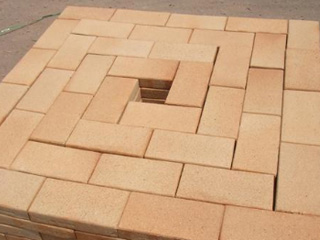Heat-resistant materials are essential for a wide range of high-temperature applications, including furnaces, kilns, engines, and turbines. These materials must withstand extreme temperatures, thermal shock, and chemical attack while maintaining their structural integrity and performance. In this article, we will discuss the durability of heat-resistant materials in extreme environments.

1.High-Temperature Resistance
The most important property of heat-resistant materials is their ability to withstand high temperatures. Many materials, such as metals and plastics, will melt or degrade at high temperatures, which makes them unsuitable for use in high-temperature applications. Heat-resistant materials, such as ceramics, refractory metals, and composites, can withstand temperatures of up to 3000°C and higher.
2.Thermal Shock Resistance
Heat-resistant materials must also be able to withstand thermal shock, which is the rapid change in temperature that can occur in high-temperature applications. Thermal shock can cause cracking, spalling, and other types of damage to the material. Materials with high thermal shock resistance, such as ceramics and some refractory metals, can withstand rapid changes in temperature without damage.
3.Chemical Resistance
Heat-resistant materials must be able to withstand chemical attack in harsh environments, such as those found in chemical processing plants and incinerators. Many materials, such as metals and plastics, can corrode or degrade in the presence of acids, alkalis, and other chemicals. Heat-resistant materials with high chemical resistance, such as ceramics and some composites, can withstand exposure to these chemicals without damage.
4.Abrasion Resistance
Heat-resistant materials must also be able to withstand abrasion, which is the wear and tear caused by friction between the material and other surfaces. Abrasion can cause erosion, cracking, and other types of damage to the material. Materials with high abrasion resistance, such as some refractory metals and composites, can withstand heavy wear and tear without damage.
5.Oxidation Resistance
Heat-resistant materials must be able to withstand oxidation, which is the process by which materials react with oxygen in the air to form oxides. Oxidation can cause degradation, corrosion, and other types of damage to the material. Materials with high oxidation resistance, such as some refractory metals and ceramics, can withstand exposure to oxygen without damage.
6.Longevity
Heat-resistant materials must be durable and have a long lifespan, especially in applications where downtime is costly and disruptive. Materials with high durability, such as some ceramics and refractory metals, can provide reliable service for many years with proper care and maintenance.
7.Cost-effectiveness
Heat-resistant materials must also be cost-effective, especially in high-volume applications. Materials with high durability and long lifespan, such as some ceramics and refractory metals, can provide significant cost savings over time, even if their initial cost is higher than other materials.
Examples of Heat-Resistant Materials
1.Ceramics: Ceramics are a broad category of materials that are typically non-metallic and have high-temperature resistance, high chemical resistance, and low thermal conductivity. Examples include alumina, zirconia, and silicon carbide.
2.Refractory Metals: Refractory metals are a group of metals that have high melting points and are resistant to corrosion and oxidation. Examples include tungsten, molybdenum, and niobium.
3.Composites: Composites are materials that are made from two or more different materials, such as a ceramic matrix reinforced with fibers. Composites can have high strength, high-temperature resistance, and high chemical resistance.
4.High-Temperature Alloys: High-temperature alloys are metal alloys that are designed to withstand high temperatures and thermal cycling. Examples include nickel-based alloys and superalloys.
Conclusion
Heat-resistant materials are essential for a wide range of high-temperature applications, and their durability in extreme environments is critical to their performance and longevity. Materials with high-temperature resistance, thermal shock resistance, chemical resistance, abrasion resistance, oxidation resistance, longevity, and cost-effectiveness are preferred in high-temperature applications. The choice of material depends on the specific application, temperature, and other environmental factors. For example, ceramics are often used in high-temperature applications due to their excellent thermal and chemical resistance, while refractory metals are preferred for their high melting point and strength. Composites can provide a combination of properties that make them suitable for a variety of high-temperature applications.
In summary, the durability of heat-resistant materials in extreme environments is critical to their performance and longevity. The choice of material depends on the specific application, and it is important to consider properties such as high-temperature resistance, thermal shock resistance, chemical resistance, abrasion resistance, oxidation resistance, longevity, and cost-effectiveness. By selecting the right heat-resistant material for a specific application, high-temperature processes can be carried out safely and efficiently, minimizing downtime and maximizing productivity.
Contact: Mgr. Han
Phone: 0086-13589497465
Email: 1255953279@qq.com
Add: Industrial Area of Lingzi Town,Zichuan District,Zibo City, Shandong,China